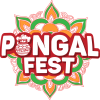
PONGAL O’PONGAL
The meaning of ”Pongal” is “to boil over.” Lets, initiate a Pongal O’Pongal ritiual as we embark on a journey towards the origins of the tradition.
In Tamil Nadu, Thai Pongal is a Thanksgiving celebration, a four-day harvest festival during which people give thanks to nature, the rain, the animals that helped in the harvest and the Sun celebrating the cycle of life that will give them an abundance of crops. The International Pongal Festival is held each year on the 14th of January; this also marks the start of the sun’s six-month journey towards the North: Uttarayana. In Tamil Nadu, January is the month of harvests, so it is only fitting that the most important harvest festival -the Pongal Celebration- should happen right in the middle of it. It has been celebrated for 2,000 years and its significance is unquestioned in Tamil Nadu.
These four days pass in an atmosphere of excitement and happiness, with just a hint of the mythical and those ancestral spirits. Houses are cleaned and refurbished days in advance, new clothes are bought or made, wives make Palakaram pastries and whole families come together to share the festivities with each other.
The First Day:
Bhogi. This day is celebrated in honour of Lord Indra, the king of clouds. His clouds provide the land with rain so that the harvest can be plentiful, yielding enough crops to feed everyone. On this day, people do a ritualistic cleansing of their houses: household articles that are deemed to be useless are burnt in a bonfire made of wood and cow-dung, and whilst those useless household articles are burning, girls dance around the fire, singing songs devoted to the gods, the harvest, and the arrival of spring.
The Second Day:
Veetu Pongal. This is the most important day of all and also gives the event its name since it is named after the dish “Pongal”, which is made from rice, boiled over either with water or milk. Later on people add some cashews and raisins to the mix, and it is either sweetened with jaggery, concentrated palm sugar, or brown sugar. Traditionally, the Pongapani (decorated earthenware dish in which the rice-milk is cooked in) is set up to face the East, providing it with the perfect view of the Sun. As the dish begins to boil, just as it starts to rise over the brim, people chant “Pongal O’Pongal.” This boiling over symbolizes abundance in future harvests, and thus it is an extremely important moment in the process. In some instances people light firecrackers as well. When the dish is ready, prayers and meditation ensues, after which the meal is shared with family and friends. One of the other main activities is Kolam drawing whereby the family gathers and creates art with coloured rice flour right in front of their own houses. They are beautiful and vibrant creative designs, bringing a wave of new beauty to the houses. Kolams also have a specific role in the celebrations with people putting some firewood in the middle of the Kolams to prepare for the preparation of the sweet rice and milk dish.
The Third Day:
Mattu Pongal. Cows are holy animals in India, so it is fitting that there is a whole day in honour of them during Pongal. So how are cows celebrated on this day? Well first, they get beautified. People decorate them with vibrant, colored beads, sheaves of corn, tinkling bells and necklaces made out of flowers. Their horns are often also painted. They are fed with the sweet rice dish and let go in the center of villages. Their passing is marked by the tinkling of their bells, and people come out to see what is happening and join the procession. Young men usually race their cattle against each other, which adds to the excitement of the event and attracts even more villagers.
The Fourth Day:
Kannum Pongal On this day, people just relax and have a good time. They spend time with their family and loved ones. They go to the beach, or to the fair and enjoy themselves. This day is held to honor family members, friends, and everyone who has contributed to making the harvest successful.
Myths
There are more than one legend that explain how Pongal festival came into being, but the most well-known ones concern the story of Govardhan Mountain and the legend of Lord Shiva and his bull, Nandi.
The first story goes that on Bhogi, the first day of Pongal, Lord Krishna lifted the Govardhan Mountain with his little finger in order to protect the people and their cattle from Lord Indra, the furious rain god.
The second story, the one about Lord Shiva, unfolds such that Nandi, Lord Shiva’s bull, was sent down to Earth to tell people to eat once a month and have oil baths each day. When Nandi touched down on Earth, he became a little confused and told people to do just the opposite (that is to say bathe once a month and eat daily). Lord Shiva became angry with Nandi for his error and thus banished his bull to Earth to help the humans in harvesting the extra food now required to satisfy their daily appetite.
